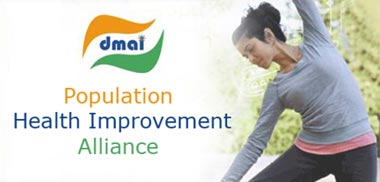Knowledge Centre of DMAI provides links to various sources of informationon healthcare.
When a country turns 62, it is time to look back and document the past for the present and the future. Any systematic enquiry into the past has value for the present and the future. Over the years several committees and commissions have given overarching recommendations for the development of the health care system in India. However, many of these recommendations continue to remain in the pages of history. As part of its endeavour to ensure easy access to information, both historical and contemporary, we at the WHO Country Office for India and the Ministry of Health and Family Welfare, Government of India, have brought out two compilations. The documents were identified and sourced from various individuals, libraries and documentation centres, across the country over a span of three years. These were thereafter, digitized or reproduced, as required.
The first compilation, ‘Health Committee and Commission Reports, 1946-2005’ (Available at: http://nrhm-mis.nic.in/Publications.aspx) provides full access to reports of the various committees and commissions which include Sokhey; Mudaliar; Chadha; Mukerjee; Jungallwala; Kartar Singh; Mehta; Bajaj and NCMH amongst others. The areas covered relate to organization, integration and development of health care services / delivery system across levels; health policy and planning; national programmes; public health; human resources; indigenous system of medicine; drugs and pharmaceuticals amongst others.
The second compilation of Health Legislation in India: A Compilation (Available at http://202.54.104.236/intranet/eip/legislation/index.php ) brings together over 200 health and health-related acts and rules, applicable at the central level, across broad categories. Key health related international covenants and guidelines have also been included.World Health Report 2008 – Primary Healthcare

Why a renewal of primary health care (PHC), and why now, more than ever? Globalization is putting the social cohesion of many countries under stress, and health systems are clearly not performing as well as they could and should. People are increasingly impatient with the inability of health services to deliver. Only few would disagree that health systems need to respond better – and faster – to the challenges of a changing world. PHC can do that.
India’s National Health Policy
 India’s National Health Policy was last formulated in 1983, and since then there have been marked changes in the determinant factors relating to the health sector. Some of the policy initiatives outlined in the NHP-1983 have yielded results, while, in several other areas, the outcome has not been as expected.
India’s National Health Policy was last formulated in 1983, and since then there have been marked changes in the determinant factors relating to the health sector. Some of the policy initiatives outlined in the NHP-1983 have yielded results, while, in several other areas, the outcome has not been as expected.
Current Scenario of Health Insurance in India
 The health insurance market in India is very limited, covering about 10% of the total population. The existing schemes can be categorized as:
The health insurance market in India is very limited, covering about 10% of the total population. The existing schemes can be categorized as:
- Voluntary health insurance schemes or private-for-profit schemes
- Employer-based schemes
- Insurance offered by NGOs / community based health insurance, and
- Mandatory health insurance schemes or government run schemes (namely ESIS, CGHS).
- Download the report
Data on Indian Healthcare System from the Ministry of Health:
Central Bureau of Health Intelligence
Government Health Facilities Mapping Project



